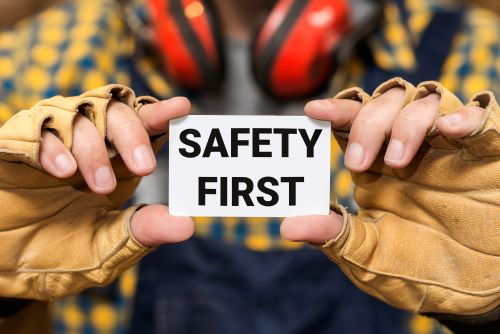 Last week Maritime NZ filed two health and safety charges under the Health and Safety at Work Act against KiwiRail over its grounding of the Interislander ferry Aratere nearly a year ago. Maritime NZ chief executive Kirstie Hewlett said the two charges related to failures by KiwiRail to keep crew and passengers safe while on board the ferry.
Last week Maritime NZ filed two health and safety charges under the Health and Safety at Work Act against KiwiRail over its grounding of the Interislander ferry Aratere nearly a year ago. Maritime NZ chief executive Kirstie Hewlett said the two charges related to failures by KiwiRail to keep crew and passengers safe while on board the ferry.
Only two weeks ago the Aratere was in the news over a power outage that caused it to anchor for nearly four hours near Picton while the problem was fixed. Another of its ferries, the Kaiārahi, recently suffered damage in large waves off Wellington’s south coast requiring its bow doors to be welded shut.
Not too long ago the Kaitaki, suffered a complete failure of its engines, causing it to drift dangerously close to rocks near Wellington harbour. According to the Transport Accident Investigation Commission’s report it was caused in part by KiwiRail's failure to replace safety-critical parts, which were years past their use-by dates. Are the ferries accidents waiting to happen before they are replaced?
A report by the Forest Industry Safety Council in December 2024 concluded that forestry fatality data over the last decade shows that manual tree-fallers are estimated to be 300 times more likely to die at work than the rest of the New Zealand workforce; 51 forestry workers died on the job between 2013 and 2023.
In the past decade, New Zealand had 18 deaths and 397 reported injuries in its ports. The Ports of Auckland former chief executive, Tony Gibson, was convicted under the Health and Safety at Work Act earlier this year after being found guilty in the relation to the death in 2020 of a father-of-seven who was killed by a falling container. He was fined $130,000 and ordered to pay $60,000 in costs to Maritime New Zealand.
A further 26 year old stevedore at Ports of Auckland died in April 2022 after being crushed by a container. That accident, and a further one at Lyttleton Port, were separately investigated by the Transport Accident Investigation Commission which released its findings in a joint report.
The Chief Investigator of Accidents, Naveen Kozhuppakalam, said the report identified broad safety issues for the whole stevedoring sector. He said that neither company monitored how well its employees were using rules and guidelines to manage workplace risks. "People become desensitised to risk, they take shortcuts or drift away from following rules, some of which are thought to be impracticable. Administrative risk controls only work with ongoing active safety leadership, good supervision, and a culture of safe working behaviour." TAIC Chief Commissioner Jane Meares said stevedoring has the second highest rate of fatalities of any industry in New Zealand.
One of our most awful workplace tolls was at Whakaari/White Island. Twenty-two people died from extreme burns and blast injuries when Whakaari erupted in 2019, and many of the 25 survivors were seriously injured. WorkSafe was not without criticism in that disaster. The Ministry of Business, Innovation and Employment (WorkSafe sits under its umbrella) commissioned an independent review that found that it knew that unregistered operators were taking tourists onto the island for five years leading up to the eruption and did nothing about it. More alarmingly, WorkSafe’s safety audits of registered operators did not assess volcanic risk, only walking hazards.
In 2023 the NZ Business Leaders’ Health and Safety Forum produced a report on workplace safety and the toll on New Zealand workers. It reported that our fatality rates are where the United Kingdom was in the 1980s. Our fatality rate is twice that it is in Australia.
The National lead government’s commitment to the safety of New Zealand workers speaks volumes. Without factoring the impact of inflation, WorkSafe’s funding has been cut by $2.2 million (a 1.6 percent cut) since 2023 - from $141.1million to $138.9 million. WorkSafe’s staff have been cut from 724 to 600 since 2023 (a 17 percent trim), although it has been reported that it is planning to increase to 675 staff.
WorkSafe reports that our workplace fatalities remain stubbornly high - there were 70 deaths in 2024 as a result of injuries from work. The latest reported data from WorkSafe shows 35,805 workplace injuries requiring more than a week away from work in 2022 (up from 24,480 in 2014). It is easy to imagine the awful impact this has on New Zealand families.
The frightening statistics in New Zealand go even further, WorkSafe has revised its work-related health estimates; work-related health deaths are estimated at 750 to 900 a year; there are estimated to be 5,000 to 6,000 hospitalisations each year due to work-related ill-health; and a worker is 15 times more likely to die from a work-related disease than an actual workplace accident!
Yet at the core of New Zealand’s Health and Safety at Work Act is the pretty simple concept of requiring all duty holders, so far as reasonably practicable, to eliminate risks to health and safety. Risks that cannot be eliminated must be minimised. They must also quite reasonably ensure that there is, amongst other matters, safe plant and safe systems of work. Whatever workers and their employers have being doing, it has not brought any meaningful change.
And the government is now proposing to alter WorkSafe’s priorities from enforcement to advice, saying this will help address concerns about underfunding and a "culture of fear". No doubt we will see these awful statistics continue! Read more...

